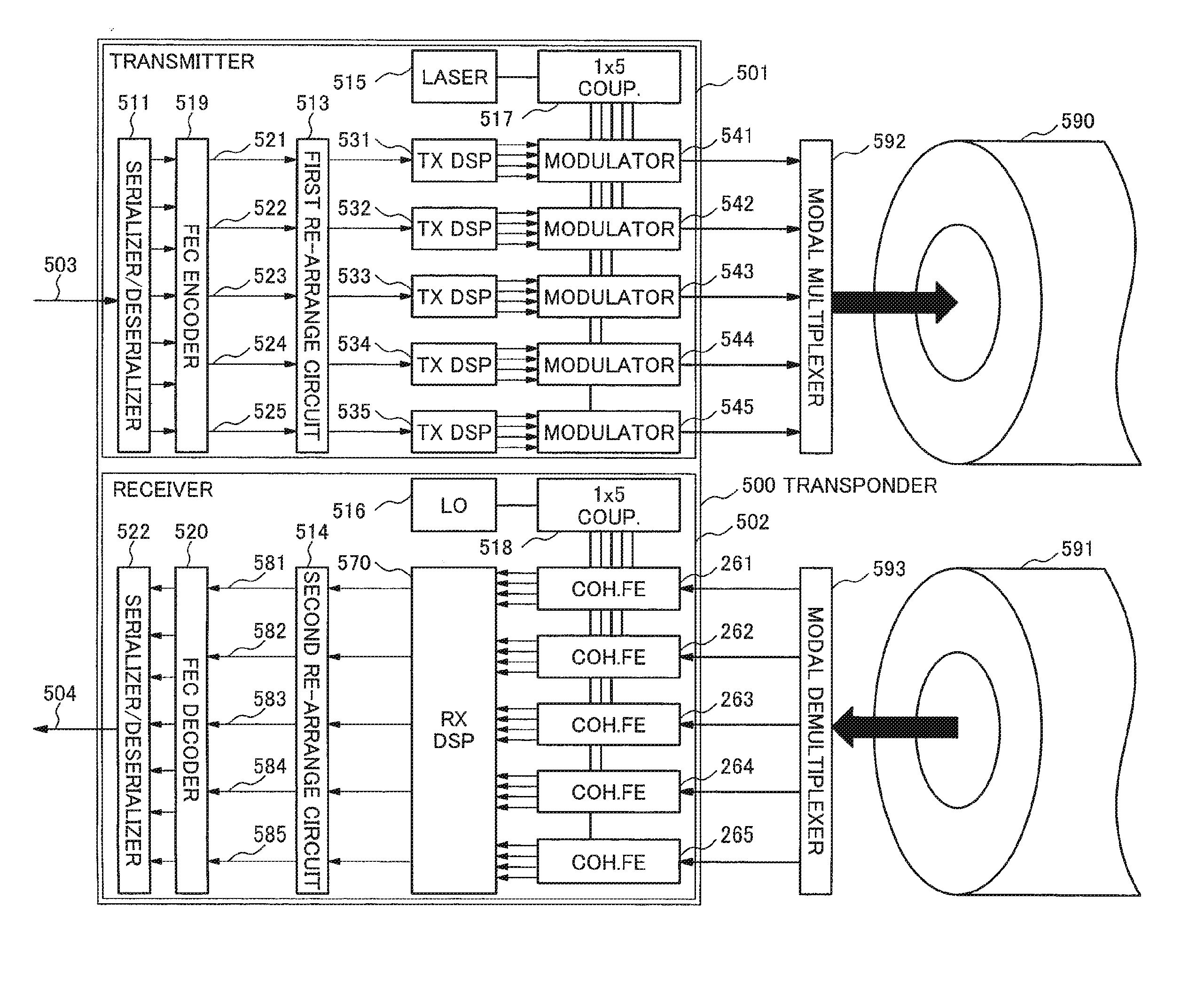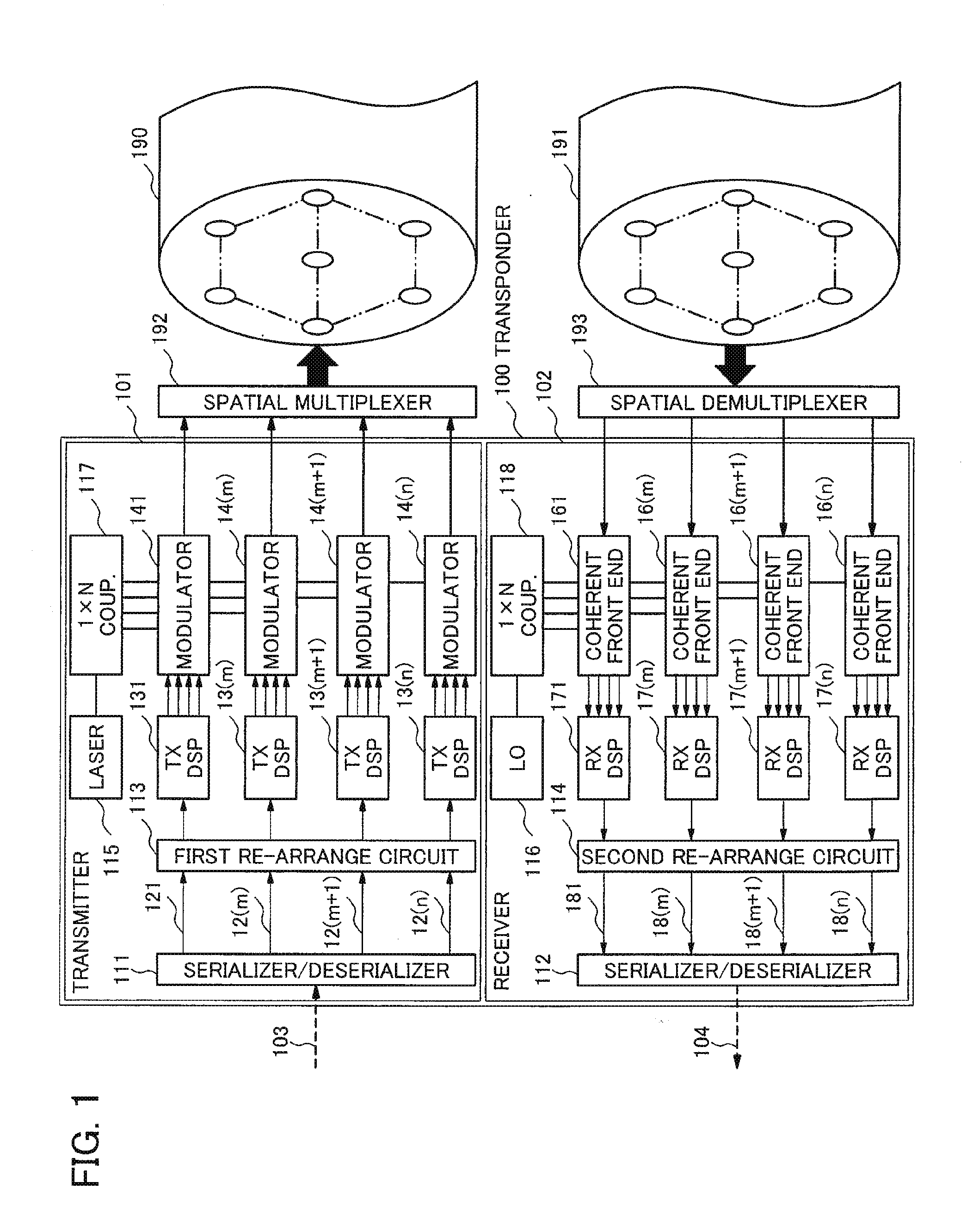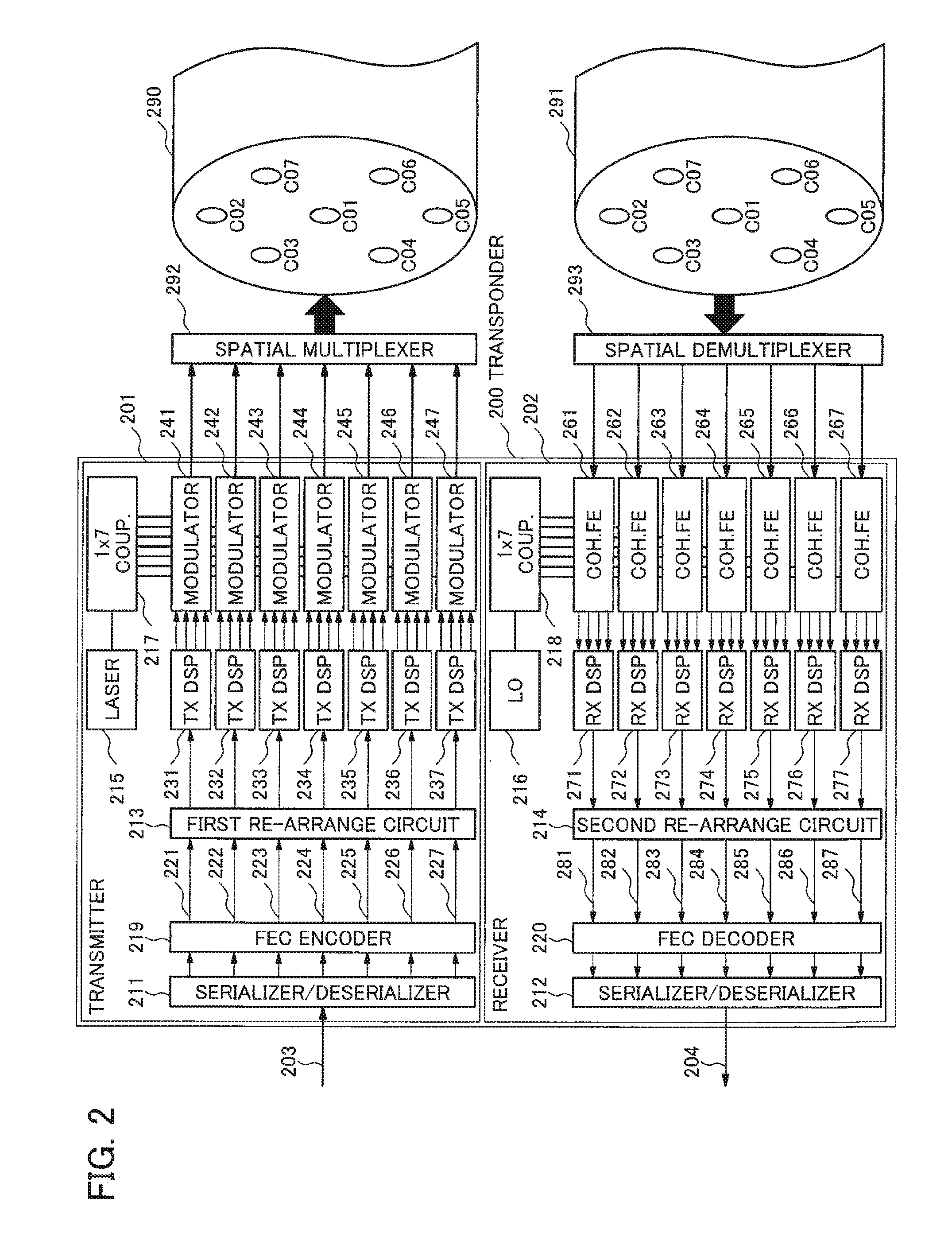System and method for transmitting optical signal over multiple channels
- Summary
- Abstract
- Description
- Claims
- Application Information
AI Technical Summary
Benefits of technology
Problems solved by technology
Method used
Image
Examples
first exemplary embodiment
[0033]FIG. 1 is a schematic representation of an optical transponder 100, including an optical transmitter 101 and an optical receiver 102. The optical transmitter 101 emits n-tuple parallel optical signals according to a binary data stream 103. A spatial multiplexer 192 multiplexes the n-tuple optical signals emitted by the optical transmitter 101 into a multicore optical fiber 190 which has multiple channels, that is, n-tuple cores, where “n” is an integer and is equal to or more than 2 (n≧2). Alternatively, the spatial multiplexer 192 can be integrated into the optical transmitter 101 or in the transponder 100.
[0034]A serializer / deserializer 111 converts the binary data stream 103 into n-tuple parallel tributaries denoted by the numerals from 121 to 12(n) on FIG. 1. Considering the integer “m” which is equal to or more than 2 and is less than or equal to “n” (2≦m≦n), a first re-arrange circuit 113 rearranges the data contained in m-tuple tributaries denoted by the numerals from 1...
second exemplary embodiment
[0046]FIG. 2 is a schematic representation of an optical transponder 200. The optical transponder 200 includes an optical transmitter 201 and an optical receiver 202. The optical transmitter 201 emits 7 optical signals according to a binary data stream 203. For the case of n=7 and m=n=7, a spatial multiplexer 292 and a multicore optical fiber 290 are similar to the spatial multiplexer 192 and the multicore optical fiber 190 on FIG. 1, respectively.
[0047]A serializer / deserializer 211 converts the binary data stream 203 into n-tuple parallel tributaries, which are regrouped and FEC (Forward Error Correction) encoded by a FEC encoder 219. The FEC frames resulting from the FEC encoder 219 are common for all tributaries output by the serializer / deserializer 211. The FEC encoder 219 outputs 7 tributaries denoted by the numerals of 221, 222, 223, 224, 225, 226, and 227 on FIG. 2.
[0048]For the case of n=7 and m=n=7, a first re-arrange circuit 213, transmitting side DSP (TX DSP) denoted by t...
third exemplary embodiment
[0072]FIG. 4 is a schematic representation of an optical transponder 400. The optical transponder 400 includes an optical transmitter 401 and an optical receiver 402. The optical transmitter 401 emits 19 optical signals according to a binary data stream 403. For the case of n=19, a spatial multiplexer 492 and a multicore optical fiber 490 are similar to the spatial multiplexer 192 and the multicore optical fiber 190 on FIG. 1, respectively.
[0073]A serializer / deserializer 411 converts the binary data stream 403 into 19 parallel tributaries, each of which is FEC encoded by individual FEC encoders denoted by the numerals from 420 to 438. The FEC frames resulting from the FEC encoders 420 to 438 are individually determined for each tributary output by the serializer / deserializer 411.
[0074]A first re-arrange circuit 413 rearranges m-tuple tributaries, where “m” is equal to or more than 2 and is less than or equal to “n” (2≦m≦n), while the remaining (n-m)-tuple tributaries are not rearran...
PUM
 Login to View More
Login to View More Abstract
Description
Claims
Application Information
 Login to View More
Login to View More - R&D
- Intellectual Property
- Life Sciences
- Materials
- Tech Scout
- Unparalleled Data Quality
- Higher Quality Content
- 60% Fewer Hallucinations
Browse by: Latest US Patents, China's latest patents, Technical Efficacy Thesaurus, Application Domain, Technology Topic, Popular Technical Reports.
© 2025 PatSnap. All rights reserved.Legal|Privacy policy|Modern Slavery Act Transparency Statement|Sitemap|About US| Contact US: help@patsnap.com



